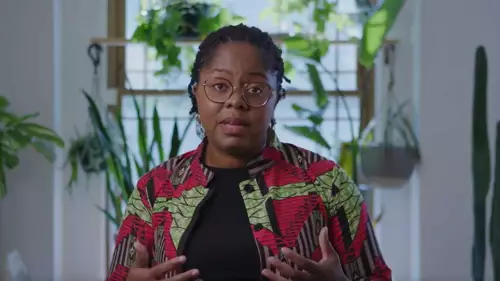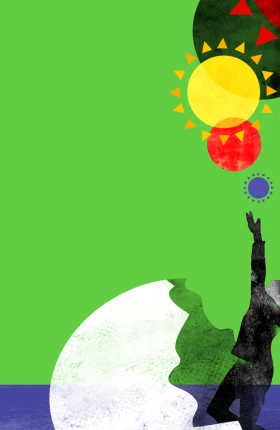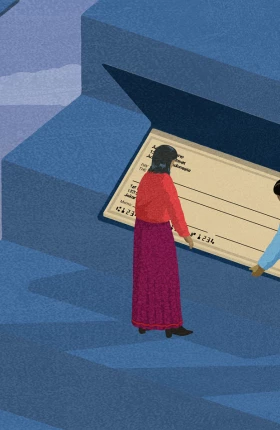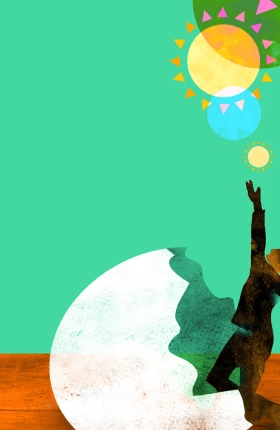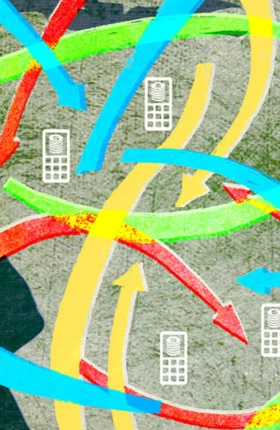Among the inequities many Black and Latinx consumers in the US face, one of the most concerning is the lack of access to necessary financial products and services. Making up just 32% of the US population, Black and Latinx households represent 64% of the country’s unbanked and 47% of its underbanked households (See Exhibit 1). While this problem is widely acknowledged, misconceptions about its causes and its effects on families make it difficult for banks to meet the challenge.
First, a bank account may often be regarded as a simple convenience, but in many Black and Latinx communities, check cashers and payday lenders are more common than bank branches and more likely to be open after hours. People in these communities often turn to alternative financial institutions, but such non-bank services come with high transaction costs. More importantly, without bank accounts, families cannot generate the data that helps establish creditworthiness. This makes it difficult to access the credit needed to fund wealth-creating activities such as investing in education or a business venture. In the short term, for those with low and volatile income, lack of credit can make it impossible to pay for an unexpected immediate expense such as a flat tire or medical bill.
Myths about the barriers to banking persist. (See Exhibit 2.) For example, while it is often thought that lack of financial education prevents people from using mainstream financial services, many who turn to non-bank services for transactions such as cashing checks or “bill pay” services do so for a logical reason: to make it easier to cope with income volatility. Not having the luxury to wait for a mainstream bank to clear a paycheck, they must pay high fees to check cashers for immediate access to the money they need for food, gas, and other necessities.
A greater understanding of what motivates the behavior of unbanked and underbanked individuals can help financial institutions design services that better meet the needs of these populations. Achieving full financial inclusion and economic opportunity for Black and Latinx populations is not just a moral or altruistic goal—greater participation of these communities in banking will create greater economic value for financial institutions as well as for consumers.
Current Options Take a Heavy Toll
A look at financial services in the US reveals an uncomfortable truth: being poor is expensive. Reliance on alternative financial services (AFS)—including check cashers, cash transactions, prepaid cards, money orders, payday lending, pawnshop loans, and title loans—to receive income, make purchases, and pay bills comes at a heavy cost. AFS lenders charge exorbitant interest and other fees, far higher than those charged by banks.
Further compounding the issue, those taking out payday loans are often unable to settle them in the next earnings cycle, which means they must roll the principal into a new loan. As a result, annualized interest rates on these loans can be as high as 300% to 600% APR. Yet people agree to the costs because they need immediate cash, clear terms and conditions, or convenient hours. In some situations, families must choose between accepting highly unfavorable terms or being unable to pay for groceries or medical care.
Along with these crippling short-term expenses, being unbanked or underbanked imposes longer-term costs on individuals, families, and communities. Relying on transaction AFS products means missing out on the opportunities to access credit presented by mainstream financial services. A critical benefit of these services is the transaction data they generate, which makes it easier to secure affordable terms. Increasingly, consumers with strong payment history on rent, utilities, and healthy bank account activity can use this data to supplement their credit score when credit agencies and lenders make underwriting decisions.
Access to affordable credit is a gateway to wealth-building investments that provide long-term financial stability.
Access to affordable credit not only helps families to weather immediate storms and take advantage of short-term liquidity but is also a gateway to wealth-building investments that provide long-term financial stability. For families to achieve economic security and break free from the pull of cyclical poverty, they need to be able to invest in assets that grow or facilitate wealth like homes, education, businesses, etc. Creditworthiness is critical to accessing these opportunities, but without mainstream financial tools and services, it can be difficult to achieve.
Who Are the Unbanked and Underbanked?
According to an FDIC survey published in late 2020, about 5.4% of all US households (7.1 million households) are “unbanked”—that is, they do not have a checking or savings account. And in the past year, a further 17.4% (22.9 million households) remained “underbanked”—that is, they have bank accounts but rely on non-bank AFS services to meet expenses.
Meanwhile, an estimated 45 million to 55 million US consumers (about 20% to 25% of adults) have no credit score. This is a staggering number. Yet it is even higher among Black and Latinx households, which are twice as likely as white households to lack a credit score. And while many Black and Latinx individuals have achieved professional and economic success, members of these communities are more likely to struggle with low and volatile income than their white counterparts.
Common assumptions about the unbanked or underbanked are not reflected in reality. Most of the unbanked are not, as is often thought, young people; 57% are of prime working age (between 25 and 54 years old). And those susceptible to being unbanked or underbanked come from a greater range of incomes and backgrounds than is often assumed: 45% of underbanked individuals earn more than $50,000 a year, and 58% have at least some college education. Perhaps most surprisingly, while some have argued that the unbanked generally lack awareness of banking products, our analysis of the data has found that almost half of them have previously had a bank account. (See Exhibit 3.)
Such insights point to an important step in fixing this problem. While identifying those most severely affected is critical, the way forward depends on gaining an understanding of the underlying cause: Why do so many people not have access to services that could make a measurable improvement to their lives?
Understanding the Barriers to Access
If misperceptions surround who the unbanked and underbanked are, why they are is also poorly understood. For example, many assume lack of trust in banks is the main reason. This factor should certainly not be disregarded. Distrust of banks is the second-most-cited reason for not accessing mainstream financial services, with 16% citing this in the FDIC survey. (See Exhibit 4.)
For many in the Black and Latinx community, this mistrust is understandable. Discriminatory lending practices were written into law until the late 1960s. More recently, during the subprime mortgage crisis, lenders were criticized for offering products to borrowers (many of them minorities) who couldn’t meet the repayment conditions over the long term. Interestingly, mistrust of banks is widespread irrespective of race: in the data, there seems to be no meaningful difference in distrust between Black, Latinx, and white households.
However, lack of trust is only a small part of what drives families to turn to AFS. Having insufficient funds is a far greater barrier, with 29% of unbanked households citing minimum balance requirements as the top reason for not accessing mainstream financial services.
Some have argued that one of the biggest problems is that those without bank accounts lack awareness of banking products. But if, as noted, almost half of unbanked households have in fact previously had an account, we must assume that they have at least some knowledge of and familiarity with banking products. In these cases, it is not a general lack of understanding, but rather a lack of awareness of specific, newer products that may drive the disconnect.
For many households, the barrier is that a mainstream bank account often has overdraft fee policies that are unclear or difficult to navigate. For someone who has little liquid savings to act as a buffer, not knowing the order in which different transactions will post can pose the risk of overdraft fees. For example, if someone with $500 in an account deposits a check for another $500 to pay a $700 rent bill and the bank issues the payment before the deposit has cleared, the account will fall short, generating an overdraft charge.
Although products with low maintenance fees and no minimum balance are becoming more common across the industry, lack of fee transparency, high overdraft fees, and the difficulty of navigating bank terms remain barriers to sustained use of mainstream financial products. In recent years, banking fee transparency has been gaining more attention in the industry. In the FDIC survey, unbanked respondents who had previously had a bank account and thought banks communicated very or somewhat clearly about their fees showed considerably higher interest in reopening an account (39%, compared with 22% for those who thought that banks communicated unclearly or not clearly at all).
In response to such findings, banks are starting to introduce more favorable terms for account holders. Most now offer products with no overdraft fees that comply with standards set by BankOn, a coalition that supports banking access. However, because these products are relatively new, many people aren’t yet aware of them. One problem, therefore, is a more subtle one: in the absence of targeted communications from banks, many people do not realize that low-cost, overdraft-free accounts are available and so apply only for mainstream products that come with high overdraft penalties.
Meanwhile, there are many structural barriers to opening an account at a mainstream bank. For example, in areas known as “bank deserts” (with few to no bank branches), accessing services in person means people must travel out of their neighborhoods, which is costly and time-consuming. Additionally, bank hours can make it hard for people who work long days or have multiple jobs to find time for a visit. Paperwork can be burdensome or contain technical jargon or terms and conditions that are hard to navigate. Among non-English-speaking customers, language can be another obstacle. For income- and language-constrained communities, banks are exclusive, rather than inclusive.
Contrast this with check cashers. A board with transaction fees is displayed above the window, like the prices at a gas station, so people can see what they’re buying. And, as with gas stations, check cashers seem to be open on every corner in some communities. Services are instant, easy, and always available. In addition, check cashers, who know their customers personally, may be able to exercise more discretion than bank tellers. For those who cannot wait for a check to clear before accessing their funds or understand the terms of a bank account, it’s not hard to understand why financial management via AFS products is more immediate and appealing.
Better-tailored banking products could reduce the fees and other barriers that keep these communities away from banks and pave the way to wealth creation. But so far, the mainstream financial market has not come up with enough affordable, available options. Understanding both the perceived and real challenges banking presents to households with low and volatile income could help financial institutions to meet their needs.
How Could Banks Do Better?
What these insights suggest is that with a targeted approach, financial institutions could design new products and services, additional features, and more effective distribution models that would enable them to reach families that are being poorly served or not served at all. Banks can take steps to do this at a number of levels.
With a targeted approach, financial institutions could design new products and services, additional features, and more effective distribution models that would enable them to reach poorly served Black and Latinx customers.
- Improving Marketing and Communications. Developing a marketing strategy is critical, particularly to raise awareness of existing low-cost banking products so that consumers with low and volatile incomes can choose the ones that best fit their needs. These efforts should include national ads, campaigns with key Black and Latinx influencers, and campaigns targeted toward communities of color that dispel perceptions that banks “aren’t for me.” Some banks have started translating their materials, including servicing documents, into other languages—something all banks seeking to increase access and reach new markets should consider.
- Addressing Accessibility. Increasing access does not simply mean opening more branches or extending hours. Exploring alternative distribution channels could make banking products and services easier to use. This might mean forming partnerships with retailers, restaurants, or public transit companies. Banks could also expand their digital servicing platforms, developing mobile apps that are better suited to users with low and volatile incomes.
- Filling Product Gaps. Strategies include offering features and services valued by the underserved—such as instant access to funds from a check deposit and confidence that checks will be cashed in a timely fashion. New product features include such offerings as courtesy overdrafts and earlier access to wages. Banks could offer auto-advances—products that effectively function like courtesy overdrafts (although interest may be charged), allowing users to take out a cash advance to cover the amount they would have otherwise overdrawn, typically up to about $250. In the short term, these products might not generate as much revenue as overdraft fees, but as banks successfully enroll new customers, expanded market share may start to make up the difference.
- Developing New Distribution Models. Banks can establish new ways of reaching unbanked and underbanked customers through partnerships with other financial institutions such as community development financial institutions (CDFIs), minority depository institutions (MDIs), community banks, and credit unions. These organizations tend to have stronger ties to their local communities, provide services that are better suited to their needs, and have long track records of partnering with their mainstream counterparts to expand access and increase opportunities, especially in communities of color.
- Meeting Consumers Where They Are. Because about half of unbanked or underbanked Black or Latinx households in the US are concentrated in just 20 urban areas (mostly around the East and South, as well as in major metropolitan areas in California and Texas), banks might create targeted approaches in the way they provide their services.
With racial equity front and center in the public discourse, banks have a responsibility to respond. Gaining a deeper understanding of marginalized communities can help institutions improve the design of their products and create engagement models that do more to meet the needs of low- and volatile-income customers. For banks that get it right, this will represent a real market opportunity, one that goes hand-in-hand with the opportunity to support the underserved and help people improve their lives and their livelihoods.
The authors thank Eileen Cowdery for her assistance.


